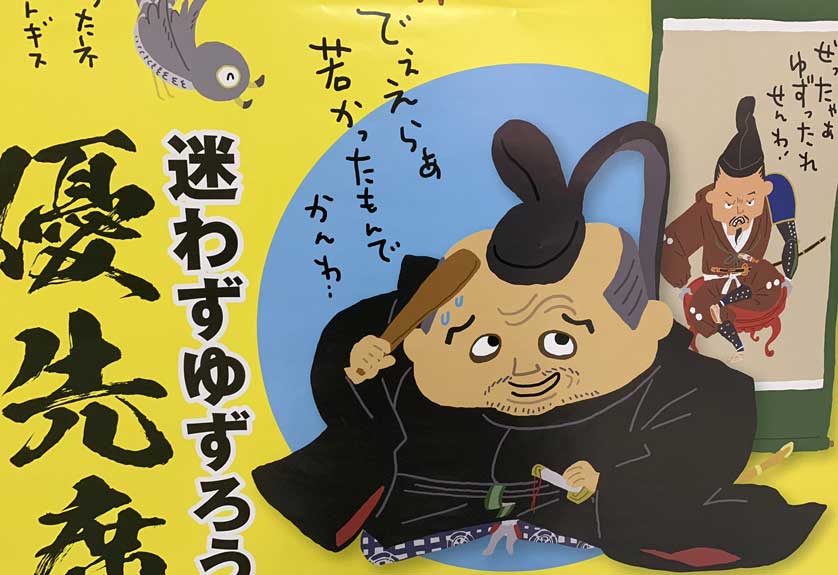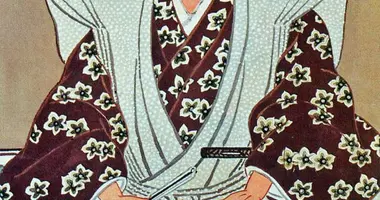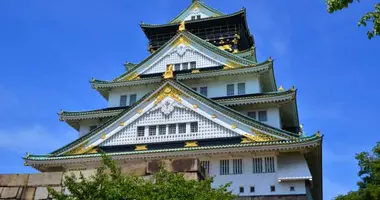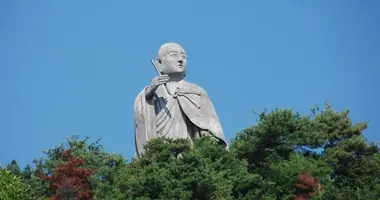Tokugawa Ieyasu - The unifier of Japan
Read a biography of Tokugawa Ieyasu, who became shogun in 1600 and established the Tokugawa shogunate that was to rule Japan for over 250 years.
Early life and rise to power
Tokugawa Ieyasu was born in 1543 in Okazaki Castle near modern-day Nagoya. The Matsudaira family he was born into claimed descent from the Minamoto clan. Ieyasu spent his childhood as a hostage, first to the Oda family and then to the Imagawa clan in Sunpu (modern-day Shizuoka). Despite this turbulent upbringing, he received training in military arts and government.
In 1558, Ieyasu fought his first battle and over the following years gradually strengthened his position through an alliance with the powerful warlord Oda Nobunaga. Together they engaged in a prolonged conflict with the rival Takeda clan, eventually defeating them in 1582. That same year, Oda Nobunaga was murdered by a retainer, leading to a succession struggle in which Toyotomi Hideyoshi emerged victorious. Though initially hostile to each other, in 1590 Ieyasu formed an alliance with Hideyoshi to attack the Hojo clan who controlled the Kanto region in eastern Japan.

The first Tokugawa shogun Ieyasu (1543-1616), the founder of the Tokugawa shogunate.
Battle of Sekigahara
Following the defeat of the Hojo, Hideyoshi offered Ieyasu control of their eight former provinces in the Kanto region in exchange for Ieyasu's existing five provinces. Though this weakened Ieyasu's immediate position as the new lands were further from the capital and his control over them was less secure, he accepted the offer to avoid all-out war with Hideyoshi.
Ieyasu established his new headquarters in the small fishing village of Edo (modern-day Tokyo) and began constructing a castle there. As Hideyoshi embarked on disastrous military campaigns in Korea in the 1590s, Ieyasu focused on consolidating his power in the Kanto region.
When Hideyoshi died in 1598, he left a five-year-old son as his heir along with a council of five regents to govern until the boy came of age. Ieyasu was the most powerful of these regents and soon tensions rose between him and those loyal to Hideyoshi's son. This led to the decisive Battle of Sekigahara in 1600, in which Ieyasu's Eastern Army defeated the Western Army loyal to the Toyotomi. Ieyasu emerged victorious as the de facto ruler of Japan.
Tokugawa Bakufu
After his victory at Sekigahara, Ieyasu redistributed fiefs across Japan, rewarding his allies and weakening his enemies. He also reduced the holdings of Hideyoshi's young son though allowing him to remain in Osaka Castle. In 1603, Ieyasu was formally appointed shogun by the emperor, establishing the Tokugawa Shogunate.
Under the Tokugawa, a feudal system known as the bakuhan system was implemented. The emperor remained the titular head of state but real power rested with the shogun in Edo. The country was divided into hans (domains) ruled by daimyo (lords). The Tokugawa controlled about a quarter of the country's agricultural land directly with the rest split among loyal daimyo. To limit their power, daimyo were strategically relocated, had to maintain residences in Edo, get permission to repair castles, and their families were effectively held hostage in Edo.
A four-tier class system of samurai, farmers, artisans and merchants was also imposed. The samurai class, to which the shogun and daimyo belonged, made up just 6-7% of the population but were the ruling class. Social mobility between classes was prohibited.
Edo - the new center of power
Ieyasu made Edo the center of political power, far removed from the imperial capital of Kyoto. He undertook major construction projects there including expanding the castle, building canals, reclaiming land, and improving infrastructure. Under Ieyasu's rule Edo rapidly grew from a small fishing village into a major city, reaching a population of 150,000 by 1605.
Many daimyo constructed lavish residences on the high ground around Edo Castle while commoners lived on the low-lying areas. A strict status separation was enforced - the samurai living in the castle and surrounding high areas were not to mix with the townspeople below. After the fall of the Tokugawa in 1868, Edo was renamed Tokyo and became the official new capital of Japan with the imperial family moving into the former Edo Castle.
Domestic policies and administration
The Tokugawa oversaw the implementation of a rigid four tier class system with samurai at the top followed by farmers, artisans, and merchants. Buddhism was strongly promoted while Christianity was outlawed. Society was tightly regulated with rules on marriage, dress, residence, and occupation based on class.
The shogunate's income largely came from taxing the peasantry, most of which was paid in rice. Detailed land surveys were carried out to assess wealth and set tax obligations. The daimyo had to maintain an expensive presence in Edo and provide labor for infrastructure projects which limited their ability to pose a threat. Though officially prohibited from trading externally, the shogunate controlled lucrative monopolies on mined silver and gold as well as minted currency.
Ieyasu's policies laid the foundation for over 250 years of stability and peace under Tokugawa rule. However, by centering power around the samurai class and rice production, it stored up problems for the future as the merchants grew wealthy and the economy shifted away from agriculture.
Final years and legacy
In 1614, Ieyasu laid siege to Osaka Castle, the seat of the Toyotomi clan. A temporary truce was agreed before hostilities resumed the following year. In the ensuing battle, the castle fell and Hideyori, Hideyoshi's son and potential rival to the Tokugawa, was vanquished. With this final threat eliminated, Tokugawa supremacy over Japan was complete.
Ieyasu died the following year in 1616 at the age of 73. Upon his death he was posthumously deified with the name Tōshō Daigongen, the "Great Gongen, Light of the East". His remains were buried at the Kunōzan Tōshō-gū Shrine before being moved to the more lavish Nikkō Tōshō-gū.
Ieyasu's shrewd plotting and careful elimination of rivals allowed him to found a shogunate that would rule Japan for over 250 years. Unifying the realm after a century of warfare, he then set out to solidify Tokugawa control and forestall future threats through castle restrictions, the hostage system, and other regulations. Though at times ruthless, he succeeded in bringing a lasting peace and stability to Japan.

Ieyasu Tokugawa arguably Japan's most powerful and influential historical figure, here warning people about their behavior on the Nagoya subway in manga form
Ieyasu's personality and skills
Ieyasu was renowned for his patience and strategic thinking. He knew when to bide his time but also when to act decisively. His system of alliances and political maneuvering deftly outfoxed his enemies. Ieyasu was loyal to friends and retainers but also remembered those who had crossed him.
Though later a man of refined taste, sponsoring artists and tea masters, he remained at heart a military man. He believed falconry and swimming kept a samurai fit and sharp. Two of his famous quotes display his forbearance and strength of will:
"Life is like unto a long journey with a heavy burden. Let thy step be slow and steady, that thou stumble not. Persuade thyself that imperfection and inconvenience are the lot of natural mortals, and there will be no room for discontent, neither for despair."
"The strong manly ones in life are those who understand the meaning of the word patience. Patience means restraining one's inclinations. There are seven emotions: joy, anger, anxiety, adoration, grief, fear, and hate, and if a man does not give way to these he can be called patient."
Cultural developments during Ieyasu's rule
The Tokugawa era saw both a continuation of traditional art forms and the emergence of new mass-produced culture. Noh theatre remained popular with the samurai elite with Ieyasu himself a keen practitioner. The tea ceremony became a refined art emblematic of the era with Sen no Rikyu establishing the way of tea.
In the cities, a vibrant new urban culture emerged catering to the tastes of the growing merchant class. This included kabuki theater, ukiyo-e woodblock prints of popular geisha and actors, and gesaku light fiction. Haiku poetry, perfected by Matsuo Basho, also flourished capturing moments in time.
Neo-Confucianism became an important philosophy and a key part of the education system. It stressed loyalty, duty, and knowing one's place in society - useful tools for the Tokugawa in justifying their rigid hierarchy. At the same time, an interest in Western learning, called rangaku or "Dutch learning", also developed through contact with Dutch traders.










